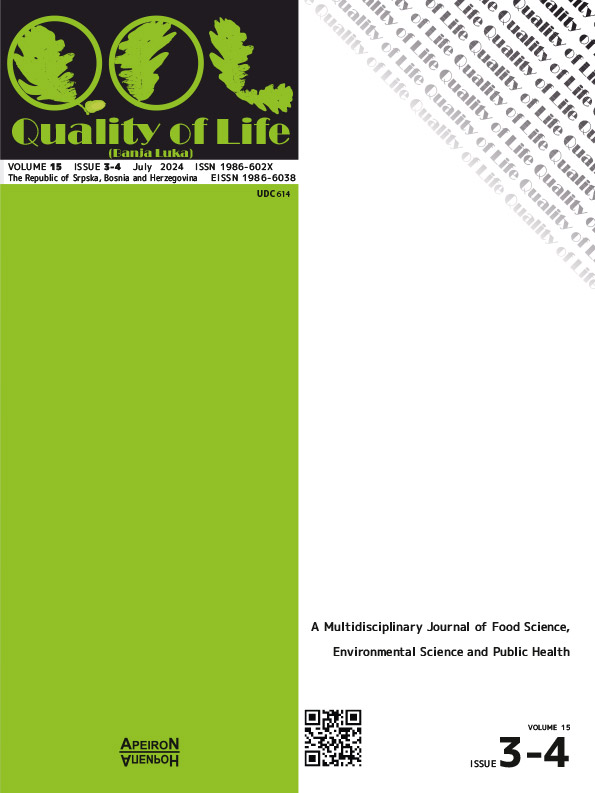Health Examinations of Persons Under Medical Supervision in Sarajevo Canton Before and During the Covid-19 Pandemic
DOI:
https://doi.org/10.7251/QOL2403077AKeywords:
health surveillance, germology, COVID-19 pandemicAbstract
Introduction Data on the prevalence of streptococci, staphylococci, and salmonella in healthy people during the COVID-19 pandemic are lacking, and according to the results of studies related to patients with COVID-19, co-infections with the mentioned bacteria were rare. Since there is not enough data on the prevalence of germinalgia in healthy people at the time of the COVID-19 pandemic, that is The aim of this paper was to present the most frequently isolated causative agents in germ carriers in the period before and during the COVID-19 pandemic. Material and method A descriptive study was applied. The data source was the results of microbiological analyzes of nose and throat swabs, as well as examination of the stool of germ carriers, for the period 2018-2022. for Sarajevo Canton. The distribution of the most common isolates is shown. Results In the observed period, a total of 1,985 germ carriers were detected from all persons placed under medical supervision. In 2018 and 2019, a total of 73,838 were examined, and 790 (1.70%) carriers were detected. From 2020 to 2022, 79,276 were examined, and 1,195 (1.51%) were found to be germinal. Of the total number of isolates in germ carriers, the most represented was St. aureus, a total of 1935 (97.48%). In 2018 and 2019, it was isolated in 758 cases (39.48%), and from 2020 to 2022 in 1177 cases (60.82%). St.beta haemoliticus was isolated in 21 cases in 2018 and 2019, and in the same period Salmonella spp. code 11. From 2020-2022. St. beta haemoliticus was isolated in 14, and Salmonella spp. Code 4. Conclusion During the COVID-19 pandemic, there was an expected decrease in health examinations performed and a reduced number of detected carriers. During the COVID-19 pandemic, almost twice as many carriers of St. aureus, and the number of carriers of St. beta hemolyticus and Salmonellae spp. The number of germ carriers detected increased in the categories of pupils and students. The reason, the end of lockdown, socializing and inadequate wearing of masks, although according to the recommendations, those categories should also wear masks.
